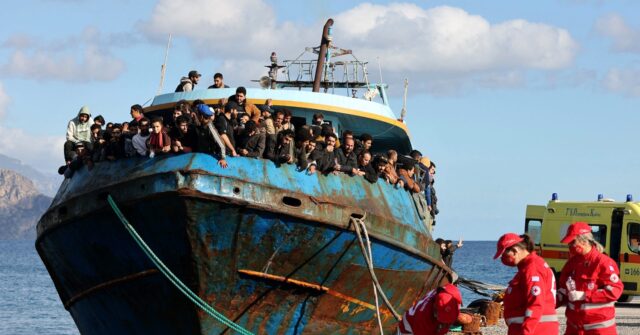Greek authorities have recently intensified their rescue efforts as migrant crises unfold in the Aegean Sea, particularly around Lesbos and Gavdos. On Tuesday, 23 migrants were saved from a dinghy near Lesbos. The situation was further exacerbated over the previous weekend when a maritime tragedy resulted in the drowning of at least seven individuals, as two more bodies were retrieved following the sinking of a migrant vessel off Gavdos. In recent incidents, including a rescue operation on Sunday, 39 migrants were saved from distress at sea, while over 150 others were rescued in separate operations. Unfortunately, reports indicate that a number of migrants remain unaccounted for, raising concerns about the challenges faced by those attempting to cross perilous waters in search of safety.
The Greek government has noted a significant surge in migrant arrivals, with reports indicating an increase of up to 35% since the fall of 2023. While many migrants are traveling the relatively short distance from the Turkish mainland to nearby Greek islands, an alarming trend shows an increasing number attempting the more dangerous voyage from Libya, covering a distance of approximately 300 kilometers (200 miles) to reach islands like Crete and Gavdos. Observers suggest that this shift in migration patterns, along with worsening security situations in conflict-ridden areas, greatly influences the flow of people seeking refuge or a better life in Europe.
Migration Minister Nikos Panagiotopoulos has addressed the underlying factors contributing to this migration crisis, stating that heightened pressures on Eastern Mediterranean routes are unlikely to ease by 2025. He highlighted the impact of geopolitical instability in the region, pointing out that ongoing conflicts—such as the recent escalation in Syria—alongside the effects of climate change, compel many individuals to leave their homes in search of survival. His remarks underline an urgent need for effective response measures amid the increasing number of individuals fleeing from violence, persecution, and climate-related disasters.
Current projections suggest that illegal migrant numbers arriving in Greece could exceed 60,000 this year, with Syrians comprising the largest group of these migrants, followed by others from Afghanistan, Egypt, Eritrea, and Palestine. This influx is emblematic of larger global migration trends, driven by a variety of factors ranging from armed conflict to economic hardship. As Greece continues to grapple with these challenges, the government’s response is also evolving in terms of processing asylum claims and adjusting to the changing dynamics of migration in the region.
In light of the recent developments within Syria, including a significant political shift following the fall of Bashar Assad, Greece has temporarily halted final asylum decisions for Syrian applicants. Previously, many of these individuals cited persecution by the Assad regime as a basis for their asylum claims. However, recent political upheaval necessitates a reassessment of the conditions in Syria, hence the pause in decisions while the government continues to accept new asylum applications. This move reflects the complexities inherent in migration management, particularly amid rapidly changing geopolitical landscapes.
Greece’s approach to dealing with the influx of migrants is multifaceted, involving urgent rescue operations at sea coupled with adaptations to immigration policy and asylum processing. With ongoing humanitarian concerns surrounding the safety of migrants, especially those attempting perilous sea crossings, and the potential long-term impacts of geopolitical instability, the situation remains fluid. Policymakers are under pressure to respond effectively and humanely to the growing challenges posed by migration while navigating the intricacies of regional politics, humanitarian crises, and climate-related pressures that drive individuals and families to seek refuge in Europe.

